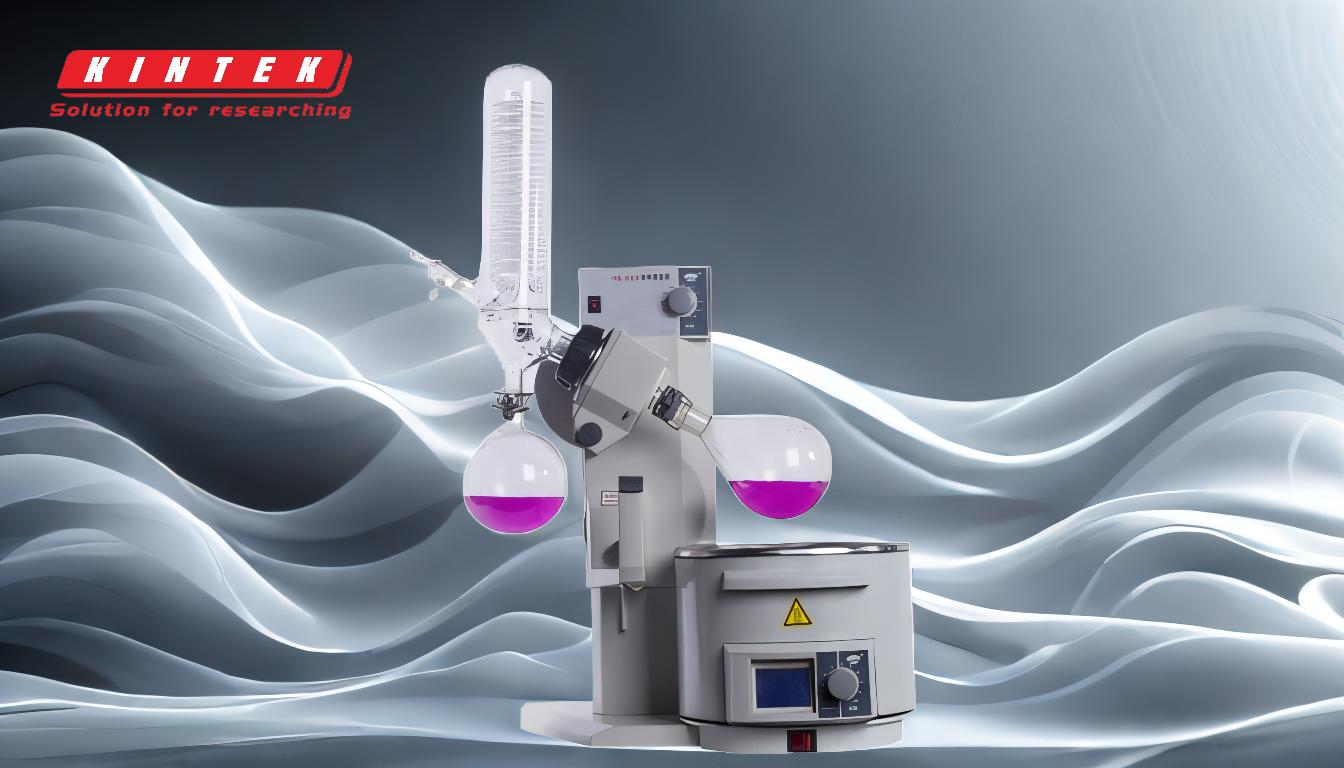The maximum temperature for a rotary evaporator typically depends on the solvent being evaporated and the safety considerations of the process. For most common lab solvents, the recommended temperature range for the water bath is between 25°C and 50°C, with 60°C being the upper limit in some cases. Higher temperatures can increase the risk of thermal decomposition, bumping, and safety hazards such as explosions or implosions. Lower temperatures are safer but may slow down the distillation process. Proper equipment, such as a manometer and distillation nomograph, can help optimize temperature and vacuum settings for efficient and safe operation.
Key Points Explained:

-
Typical Temperature Range for Rotary Evaporation:
- Most common lab solvents require a water bath temperature between 25°C and 50°C.
- Ethanol vapor temperatures are typically lower, around 15-20°C.
- This range balances efficiency and safety, minimizing risks like thermal decomposition and bumping.
-
Upper Temperature Limit:
- The maximum temperature for a rotary evaporator is generally 60°C.
- Higher temperatures can speed up distillation but increase risks, such as:
- Thermal decomposition of sensitive compounds.
- Safety hazards like explosions or implosions, especially with unstable impurities or compounds.
- Cleaning challenges, particularly when using silicone oil as the heating medium.
-
Safety Considerations:
- Thermal Decomposition: Lower temperatures help prevent the breakdown of heat-sensitive compounds.
- Bumping: Lower temperatures reduce the likelihood of bumping, which can cause splashing and loss of sample.
- Explosions and Implosions: Concentrating unstable impurities or drying unstable compounds (e.g., organic asides, acetylides, nitro-containing compounds) at high temperatures can lead to explosions. Flawed glassware can also cause implosions under vacuum.
-
Optimizing the Process:
- Vacuum Settings: Lowering the vacuum value can improve distillation efficiency without requiring higher temperatures.
- Tools for Optimization: A manometer and distillation nomograph can help determine the ideal temperature and vacuum settings for specific solvents.
- Common Sense: Always consider the properties of the solvent and the stability of the compounds being evaporated when selecting a temperature.
-
Practical Recommendations:
- For most applications, a water bath temperature of 30-40°C is sufficient and safe.
- If faster distillation is needed, consider adjusting the vacuum rather than increasing the temperature.
- Always monitor the process and use appropriate safety equipment to mitigate risks.
By adhering to these guidelines, users can ensure safe and efficient operation of rotary evaporators while minimizing risks associated with high temperatures.
Summary Table:
| Aspect | Details |
|---|---|
| Typical Temperature Range | 25°C to 50°C for most solvents; 15-20°C for ethanol. |
| Upper Temperature Limit | 60°C (higher risks include decomposition, bumping, explosions, or implosions). |
| Safety Considerations | Avoid thermal decomposition, bumping, and explosions by using lower temperatures. |
| Optimization Tools | Use a manometer and distillation nomograph for ideal temperature and vacuum settings. |
| Practical Recommendations | Maintain 30-40°C for safe and efficient distillation; adjust vacuum for speed. |
Need help optimizing your rotary evaporator setup? Contact our experts today for personalized advice!










